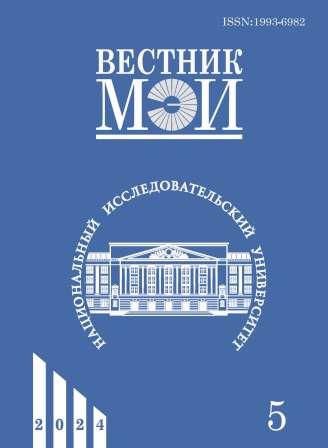A Methodology for Controlling the Global Power Pool Transient Stability
Abstract
Large power systems with AC and DC networks are a solid basis for uniting various facilities for electricity generation, its transmission over long distances, and distribution over vast territories. It is exactly electric networks with high transmission capacity that will become a basis for setting up a Global Power Pool (GPP) and will act as backbone electric networks within its framework. The GPP distinctive features are a variety of energy sources used, equipment, and an extensive coverage area. The purpose of the study is to develop a GPP sustainability management methodology, which will imply a process aimed at managing the sustainability conditions, including assurance of system stability through reasonable application of technical methods and means. The methodology of carrying out work to ensure the electric power system (EPS) stability under the conditions of large disturbances is based on means to ensure a stable mutual movement of the rotating masses in the system that are mutually interconnected by electromagnetic interaction. Stability is ensured in two ways: by excluding the nature of unstable motion (angular stability) and by controlling the parameters characterizing the electromagnetic coupling of rotating masses (controlling the transmission capacity parameters of electrical links). Criteria for ensuring the power pool stability are formulated, which have been approbated on the GPP analysis model in the ETAP software and computation system. Application of the obtained study results is presented as proposals for amending the existing regulatory documentation developed by national system operators of power systems.
References
2. Machowski J., Bialek J.W., Bumby J.R. Power System Dynamics: Stability and Control. N.-Y.: J. Wiley, 2008.
3. Кузнецов О.Н., Зубкова И.С., Аверьянов Д.А. Эквивалент энергосистемы глобального энергетического объединения для расчётов динамической устойчивости // Электротехника. 2022. № 1. С. 47—53.
4. Баринов В.А., Лисицын Н.В. Направления развития электроэнергетики России. Интеграция ЕНЭС в глобальную электрическую сеть // Вести в электроэнергетике. 2017. № 1. С. 4—15.
5. Кононенко В.Ю., Баринов В.А. Интеграция энергетических систем // Вести в электроэнергетике. 2018. № 1(93). С. 2—9.
6. Мировая энергетика [Электрон. ресурс] http://www.eeseaec.org (дата обращения 17.05.2021).
7. Chow J.H., Galarza R., Accari P., Price W.W. Inertial and Slow Coherency Aggregation Algorithms for Power System Dynamic Model Reduction // IEEE Trans. Power Systems. 1995. V. 10(2). Pp. 680—685.
8. Fernandez-Guillam А., Gomez-Lazaro E., Muljadi E., Molina-Garcia A. Power Systems with High Renewable Energy Sources: a Review of Inertia and Frequency Control Strategies Over Time // Renewable and Sustainable Energy Rev. 2019. V. 115. P. 109369.
9. Zubkova I.S., Kuznetsov O.N., Averyanov D.A. Ensuring the Transient Stability of the Energy Interconnection Considering a Share of RES Connected to the Electric Grid-based Inverters // Proc. IV Intern. Youth Conf. Radio Electronics, Electrical and Power Eng. 2022. Pp. 1—5.
10. Андреев В.М. и др. Создание комплексных интегрированных систем энергоснабжения на базе инновационных технологий в условиях происходящих в мире процессов // Электричество. 2020. № 3. С. 4—12.
11. Шульга Р.Н., Стальков П.М. Системы управления и регулирования вставок и передач постоянного тока // Энергия единой сети. 2021. № 1(56). С. 44—54.
12. Рыжов Ю.П. Дальние электропередачи сверхвысокого напряжения. М.: Издат. дом МЭИ, 2007.
13. Лю Чжэнья. Глобальное энергетическое объединение М.: Издат. дом МЭИ, 2016.
14. Приказ Министерства энергетики Российской Федерации № 630 от 3 августа 2018 г. Об утверждении требований к обеспечению надежности электроэнергетических систем, надежности и безопасности объектов электроэнергетики и энергопринимающих установок «Методические указания по устойчивости энергосистем».
---
Для цитирования: Анисимова И. С., Кузнецов О.Н. Методика управления динамической устойчивостью глобального энергетического объединения // Вестник МЭИ. 2024. № 5. С. 18—26. DOI: 10.24160/1993-6982-2024-5-18-26
---
Конфликт интересов: авторы заявляют об отсутствии конфликта интересов
#
1. Venikov V.A. Perekhodnye Elektromekhanicheskie Protsessy v Elektricheskikh Sistemakh. M.: Vysshaya Shkola, 1985. (in Russian).
2. Machowski J., Bialek J.W., Bumby J.R. Power System Dynamics: Stability and Control. N.-Y.: J. Wiley, 2008.
3. Kuznetsov O.N., Zubkova I.S., Aver'yanov D.A. Ekvivalent Energosistemy Global'nogo Energeticheskogo Ob'edineniya dlya Raschetov Dinamicheskoy Ustoychivosti. Elektrotekhnika. 2022;1:47—53. (in Russian).
4. Barinov V.A., Lisitsyn N.V. Napravleniya Razvitiya Elektroenergetiki Rossii. Integratsiya ENES v Global'nuyu Elektricheskuyu Set'. Vesti v Elektroenergetike. 2017.1:4—15. (in Russian).
5. Kononenko V.Yu., Barinov V.A. Integratsiya Energeticheskikh Sistem. Vesti v Elektroenergetike. 2018;1(93):2—9. (in Russian).
6. Mirovaya Energetika [Elektron. Resurs] http://www.eeseaec.org (Data Obrashcheniya 17.05.2021). (in Russian).
7. Chow J.H., Galarza R., Accari P., Price W.W. Inertial and Slow Coherency Aggregation Algorithms for Power System Dynamic Model Reduction. IEEE Trans. Power Systems. 1995;10(2):680—685.
8. Fernandez-Guillam A., Gomez-Lazaro E., Muljadi E., Molina-Garcia A. Power Systems with High Renewable Energy Sources: a Review of Inertia and Frequency Control Strategies Over Time. Renewable and Sustainable Energy Rev. 2019;115:109369.
9. Zubkova I.S., Kuznetsov O.N., Averyanov D.A. Ensuring the Transient Stability of the Energy Interconnection Considering a Share of RES Connected to the Electric Grid-based Inverters. Proc. IV Intern. Youth Conf. Radio Electronics, Electrical and Power Eng. 2022:1—5.
10. Andreev V.M. i dr. Sozdanie Kompleksnykh Integrirovannykh Sistem Energosnabzheniya na Baze Innovatsionnykh Tekhnologiy v Usloviyakh Proiskhodyashchikh v Mire Protsessov. Elektrichestvo. 2020;3:4—12. (in Russian).
11. Shul'ga R.N., Stal'kov P.M. Sistemy Upravleniya i Regulirovaniya Vstavok i Peredach Postoyannogo Toka. Energiya Edinoy Seti. 2021;1(56):44—54. (in Russian).
12. Ryzhov Yu.P. Dal'nie Elektroperedachi Sverkhvysokogo Napryazheniya. M.: Izdat. Dom MEI, 2007. (in Russian).
13. Lyu Chzhen'ya. Global'noe Energeticheskoe Ob'edinenie M.: Izdat. Dom MEI, 2016. (in Russian).
14. Prikaz Ministerstva Energetiki Rossiyskoy Federatsii № 630 ot 3 Avgusta 2018 g. Ob utverzhdenii Trebovaniy k Obespecheniyu Nadezhnosti Elektroenergeticheskikh Sistem, Nadezhnosti i Bezopasnosti Ob'ektov Elektroenergetiki i Energoprinimayushchikh Ustanovok «Metodicheskie Ukazaniya po Ustoychivosti Energosistem». (in Russian)
---
For citation: Anisimova I.S., Kuznetsov O.N. A Methodology for Controlling the Global Power Pool Transient Stability. Bulletin of MPEI. 2024;5:18—26. (in Russian). DOI: 10.24160/1993-6982-2024-5-18-26
---
Conflict of interests: the authors declare no conflict of interest




